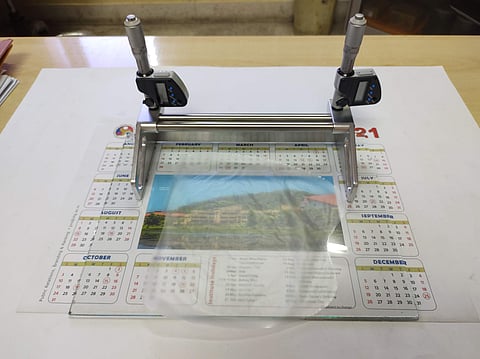

Medical waste. The thing is, it is a morally ambiguous arena. In a field that requires the optimum level of sanitation and speed and accuracy, thinking about what is discarded, or created as a parallel cost is often ignored, and one can't point too many fingers at that either.
However, facts are facts. The United Nations Environment Programme says that an assessment of waste generation rate data from around the world shows that about 0.5 kg per bed per day is produced in hospitals. India is expected to generate 775.5 tonnes of medical waste by 2022. And on a planet that is quite literally stinking up and sinking under the weight of waste we create, every little pile counts.
For PhD scholar Arita Das from IIT Guwahati, it was pure curiosity and trial and error that led her to stumble upon a formula to create self-dissolving wound dressings. You heard that right. Regardless of whether you find the process of removing bandages painful or comforting, the fact is that it is a contributor to the trash can. "I am a chemical engineer. We were playing around and experimenting with polymers, and we wanted to make a new composite material. We didn't have an application in mind. We weren't able to reach the ideal level of solubility in water with just organic materials. Polyvinyl alcohol on its own had high solubility. So we combined starch which is a natural polymer with synthetic polyvinyl alcohol. We also imbibed citric acid and malic acid and glycerol and reached at this bio-degradable, non-toxic, transparent hydrogel. That is when we realised that this could have application in wound dressings, where degradation is a big issue," says Arita.
The citric and malic acid components of the hydrogel take care of providing the necessary acidity to kill the bacteria in the wound. They are also non-toxic in nature and prevent the wound from festering, says the researcher. "We collaborate with various departments here in IIT Guwahati and that has helped in bolstering the quality of this product," Arita believes. The product is also transparent and it adapts its shape to the changing form of the wound, thus giving the injured area space to heal. Srirupa Bhattacharyya, Doctoral Fellow, IIT Guwahati, Chandan Das and Ramagopal V S Uppaluri, Faculty in the Department of Chemical Engineering also collaborated on the project with the Arita.
(L_R) Aritra Das, PhD Scholar, Chandan Das, Professor, & Ramagopal V.S. Uppaluri, Professor
Arita calls herself a slow learner and says that she got a great working environment at the campus. Both her mentors both gave her enough time and the right atmosphere and helped her stick to a step-by-step process. "They helped me become more analytical, and learn how to implement data," she says. Now in her third year of PhD, she started experimenting in her third year and has been able to publish her findings in the peer-reviewed International Journal of Biological Macromolecules.
Implementation in a real-life event isn't allowed in the institution, the product's data is available for further research. Also, the nanotechnology department of the institution can enable the creators to apply for a further project proposal and take their idea forward. Only after due diligence will they be able to carry out clinical trials. It might be a small step, but in a world that is in the midst of a dire climate crisis, it does feel like a step in the right direction.
